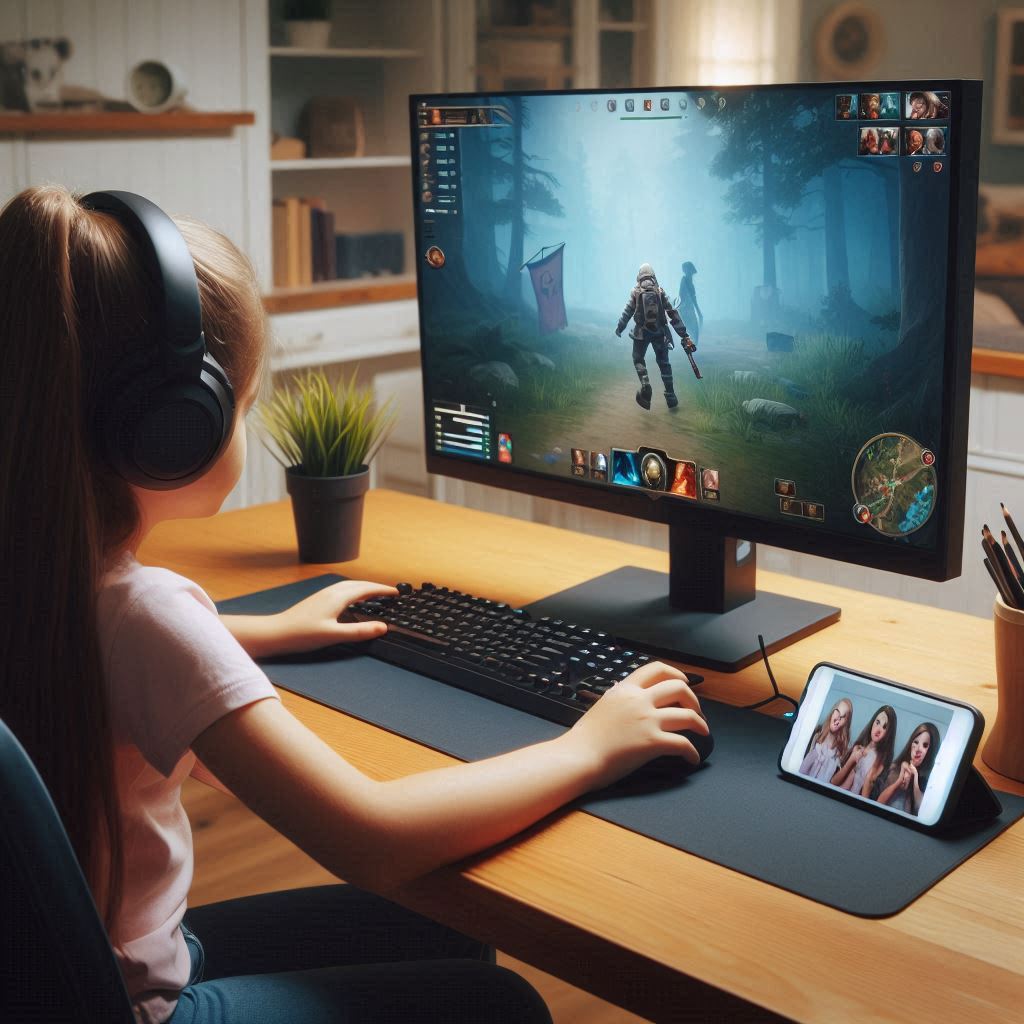Reality is experienced through our perceptions, our senses, our feelings, belief, etc. So, this means that real truth is difficult to discern, if it even exists, as we all have slightly different senses, feelings and beliefs. This creates a rich world especially in relation to our interactions with other human beings where body language, intonation, pace and more all add to what we say, as we seek to communicate and to collaborate.

But then we enter the digital world. Recently I saw a young girl engaged in an online game with friends, where at the same time she had her mobile phone perched against her monitor in a WhatsApp group chat with some of her friends. Some were involved in the game but others were not. Her reality was being experienced through two screens, one being the monitor of her PC as she played and the other being her mobile which connected her to her friends. This got me thinking about how our increasing use of digital technologies and tools might be shaping our reality.
One of the first things we lose in the example above is the non-verbal communication and the additional information which helps us when communicating with others. A video call, with its head or upper torso view, fails to communicate the full range of non-verbal communication which is apparent when stood talking with someone. Additionally, I suspect the digitisation of audio removes some subtle tells plus we need to remember that video calls aren’t properly duplex allowing for multiple people to communicate at the same time, unlike in real life meetings. I think the challenge around multiple people speaking at the same time on a video call relates to the lack of spatial data in that all the voices come from speakers in your laptop or desktop or from headphones, where in real life your ears can pick up the position of the audio source, the person speaking, and can use this to help filter out the voices of multiple participants speaking at once, based on their differing positions.
I also wonder that this faux group play activity may give an impression of a social experience however without the physical interactions of a “real-life” activity, and that this lack of physical interaction results in a different physiological response from participants when compared to a an in-person activity. I wonder, for example, if our heart rate changes in the same way during a video call when compared with an in-person interaction; I suspect not. This in turn makes me wonder what the impact is where the psychological impact of an activity no longer aligns with the normal physiological impact as would have been experienced by previous generations of humans spanning back thousands of years. Does this potential gap make a difference? And if the “virtual” group play holds the same, or nearly the same value, to the individual as real life interactions might that lead us to allocate more value to online interactions which leaves us open to online trolling, cyber bullying and hurtful online comments, which in turn impact on our mental health and wellbeing? Many of the comments I have read online are things people would be less likely to say if the person they were directing the comments towards was stood in front of them.
There are lots of advantages to the online and digital world including the ease of communication across vast distances, the ability to communicate without the time-bounds of people being available at the same time, the ability to collaborate and share complex ideas, etc. But in all this there are disadvantages or risks. Has the digital world been re-wiring how we think and how we learn? Is the abundance of stuff, as supported by technology a good thing, including for fast food, OnDemand TV, next day delivery, instant content generation through the use of generative AI, etc. Maybe this abundance is making us more needy or less resilient? Has our reliance on technology and our habitual use of technology led to a perception of lesser agency over our own lives? Is the digital world with its instant news and social media, shaping our reality and leading to the sense of struggle, division and unfairness which seems to be the standard state of affairs when I watch the breakfast news each morning?
I suppose my main question here is, has the world changed for the worse, or is it a case that we are now viewing our worlds increasing through the prism of our screens and our devices, the technologies they use and the companies that control these technologies?

